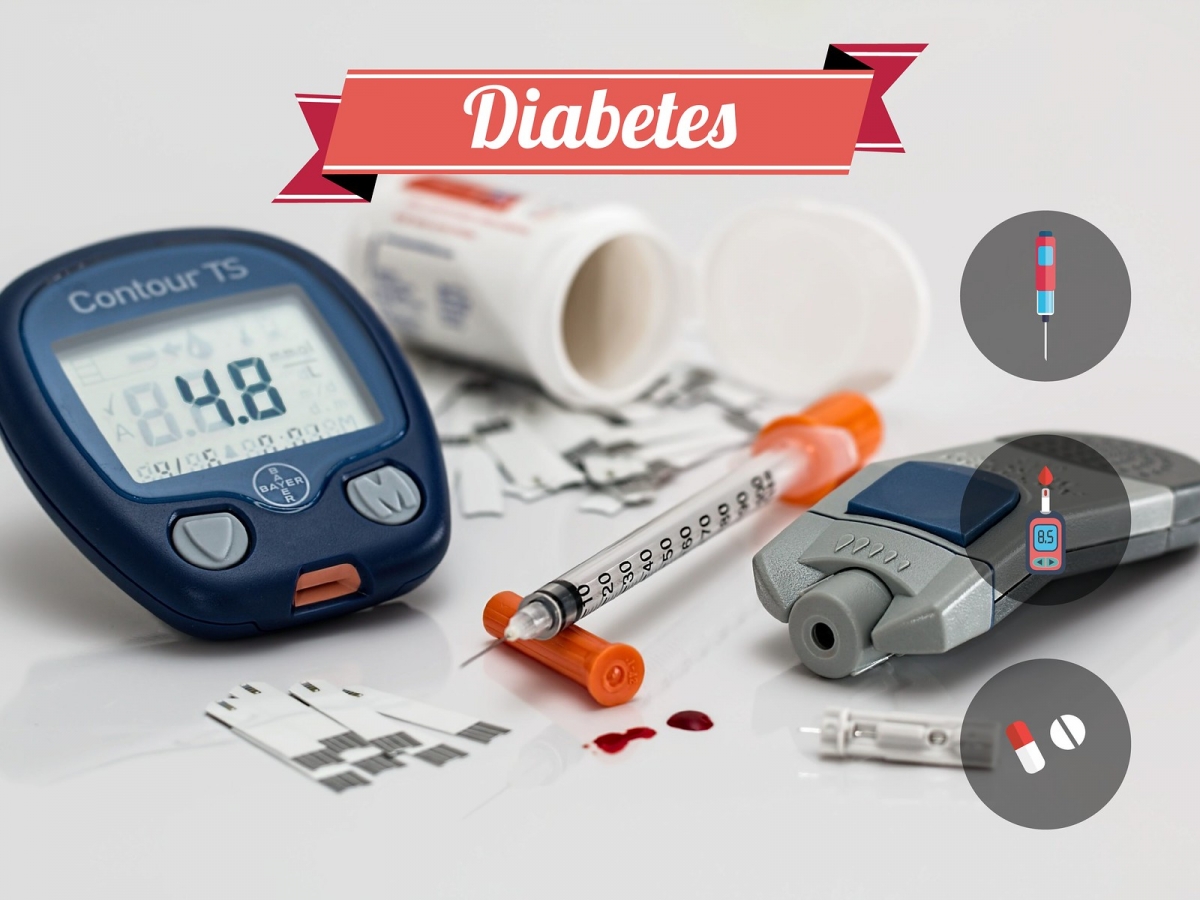Diabetes is a medical condition in which a person’s blood sugar levels are drastically increased. This condition is medically known as diabetes mellitus, and it usually results either because the body does not produce enough insulin or because the cells do not respond adequately to the previously produced insulin. This disease manifests in a couple of symptoms, which may not instantly point out to the health problem. The classical symptoms include frequent urination, increased thirst and increased hunger. However, in many cases the symptoms develop much more slowly and may be very mild or even completely absent. The earlier the condition is diagnosed the sooner the treatment may start and prevent many of the associated hazardous effects on health.

Causes of diabetes
There are three principal types of diabetes: type 1 diabetes, type 2 diabetes and gestational diabetes. The former occurs among the pregnant women since the placenta produces hormones to sustain the pregnancy, and these hormones sometimes make the patient’s cells more resistant to insulin. Typically, gestational diabetes progresses with the pregnancy, as the placenta grows larger, since the pancreas fails to produce extra insulin to aid in the process.
Gestational diabetes is a temporary condition but somewhere about 20%–50% of women affected with it during pregnancy will develop type 2 diabetes later in life.
Type 1 diabetes occurs when the immune system mistakenly destroys the insulin producing cells in the pancreas. In other words, type 1 diabetes is an autoimmune disease. As for any other autoimmune disease, scientists are not completely sure what causes it, but it most possibly arises from the combination of various factors, including genetic and environmental effects.
Type 2 diabetes is a condition defined by patient’s cell resistance towards the insulin. In other words, pancreas cannot create sufficient amounts of insulin to overcome this resistance. This is the most common type, which typically starts as a pre-diabetes phase characterized by a condition in which the patient’s blood sugar levels are higher than normal but not high enough for a diagnosis of diabetes. The exact cause of type 2 diabetes is also unknown, but it probably results from a combination of genetic, lifestyle and environmental factors.
Known risk factors
The risk factors for diabetes differ from one to another type of diabetes. For type 1 diabetes, genetic component is very strong and people who have a close relative affected by this disease are at a higher risk. Some dietary habits are also considered risky, for example: low with vitamin D, early exposure to cow’s milk, exposure to cereals before 4 months of age or after 7 months of age.
Risk factors for prediabetes and type 2 diabetes include being overweight and having a sedentary lifestyle, having family history of this disease, being older, having higher levels of cholesterol and triglycerides, having high blood pressure, or being diagnosed with gestational diabetes or polycystic ovary syndrome.
Women older than 25 and having a close relative affected by diabetes are at the greatest risk of gestational diabetes.

















Your thoughts on this
Loading...